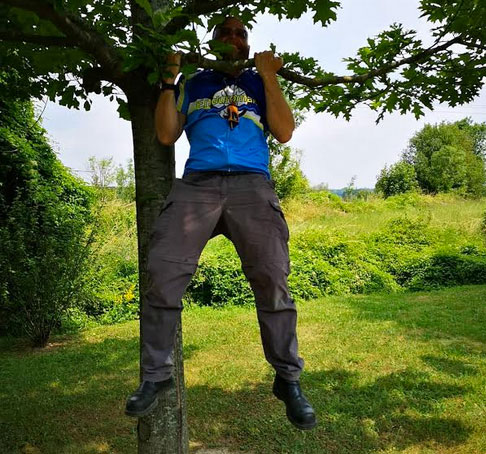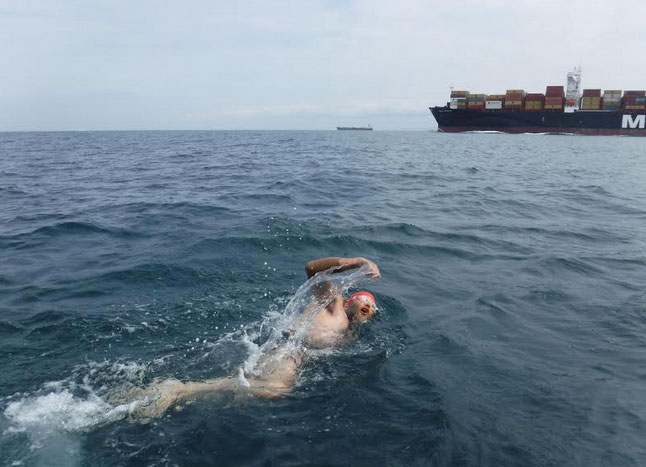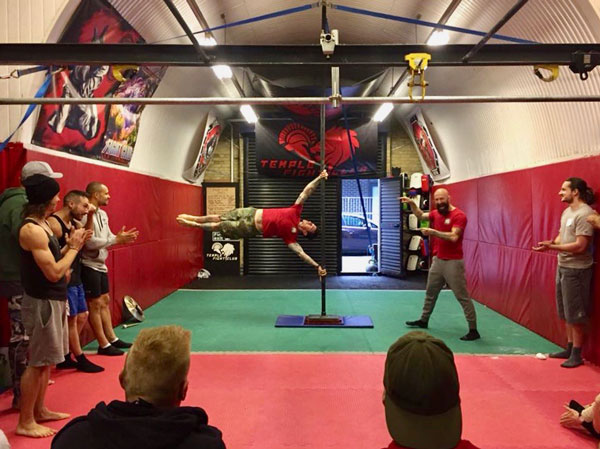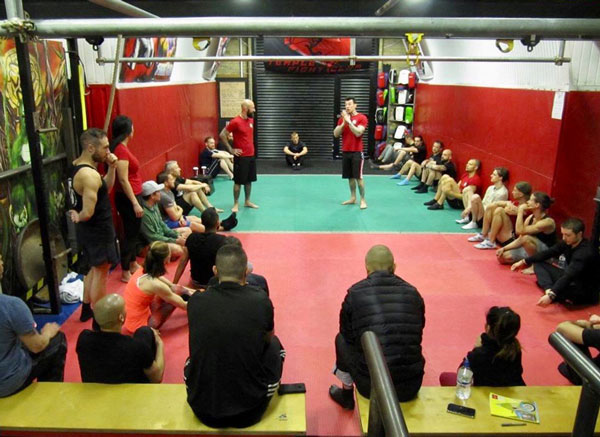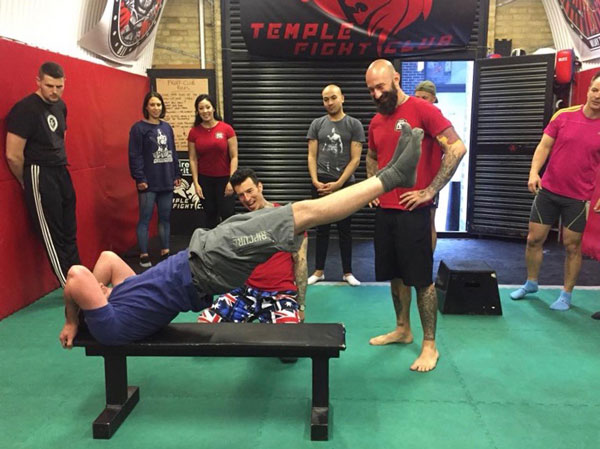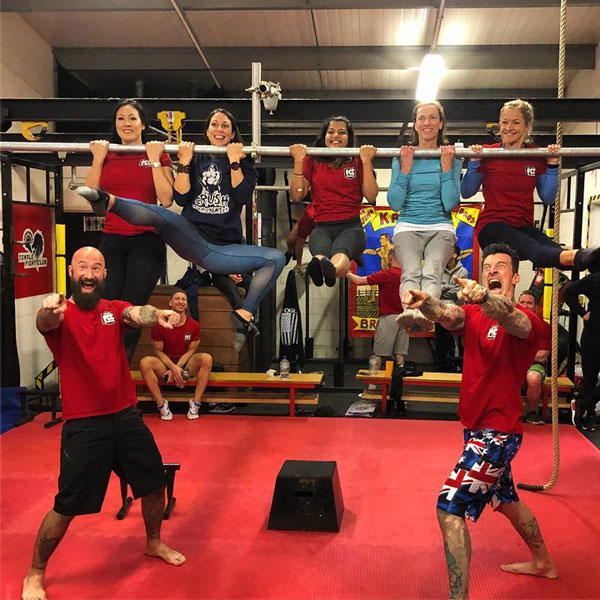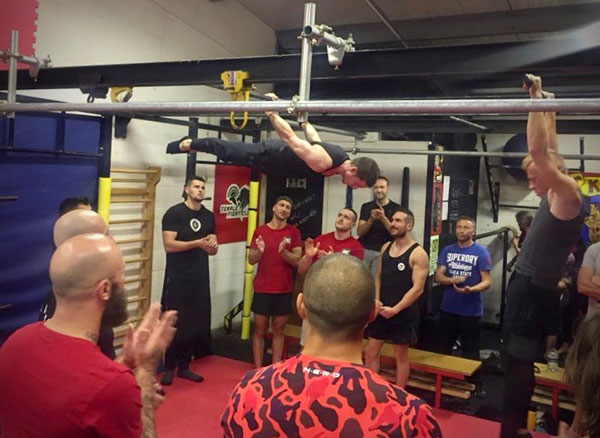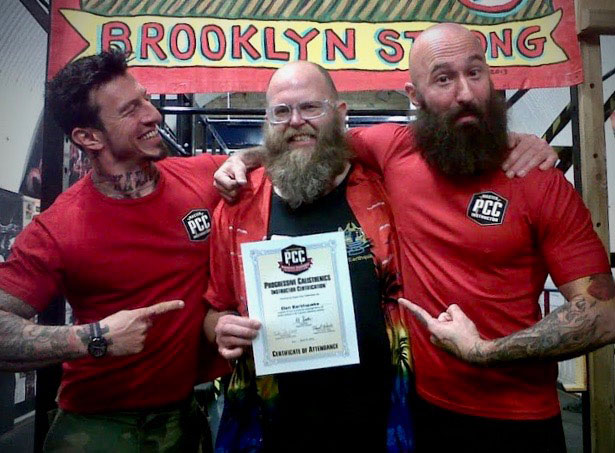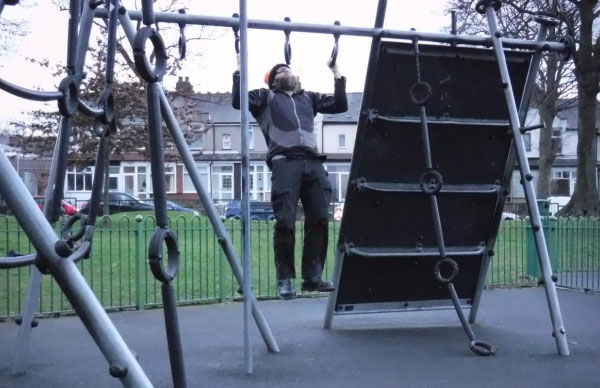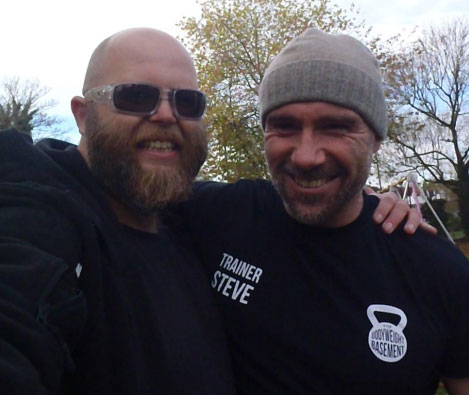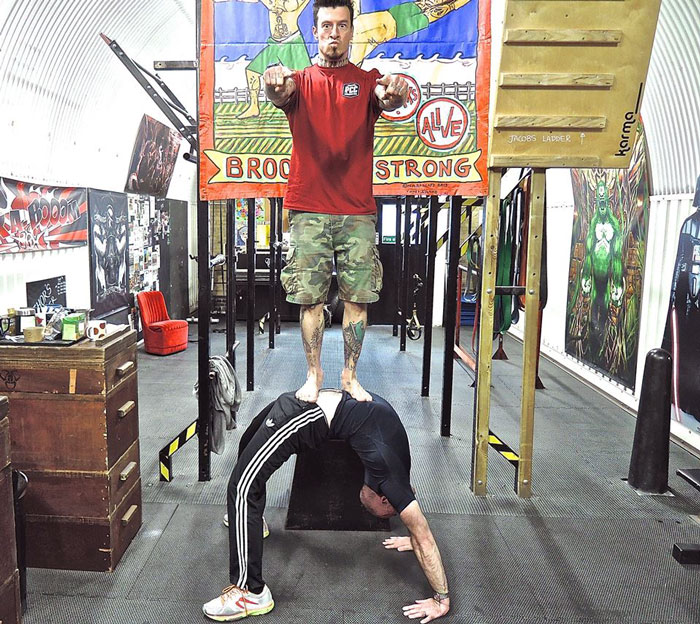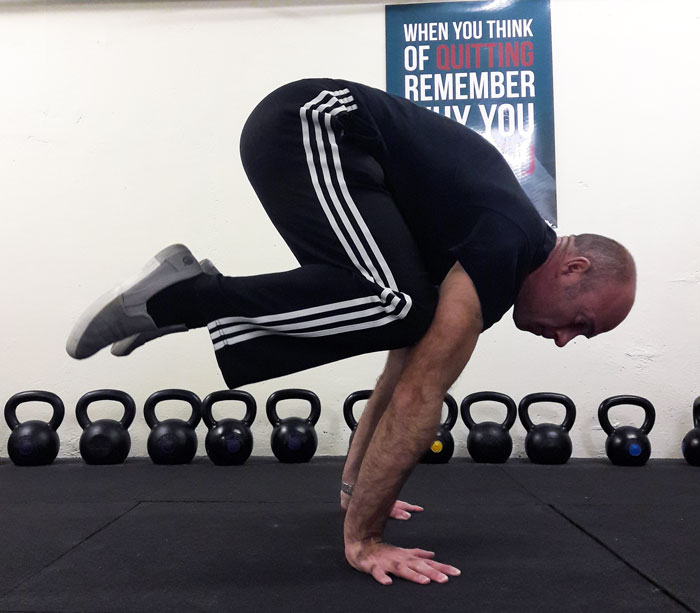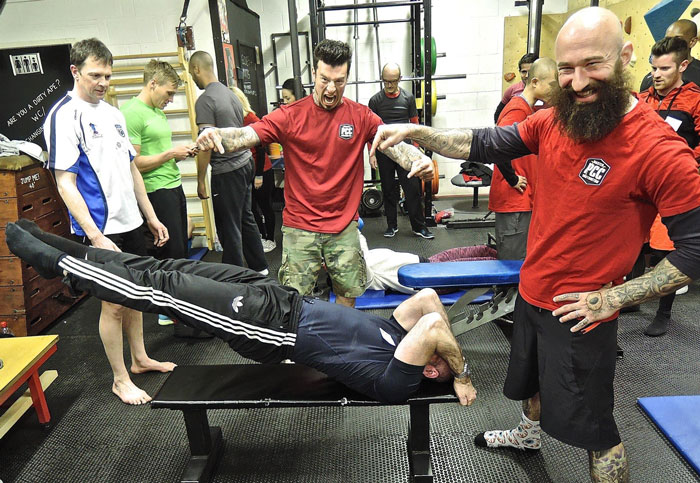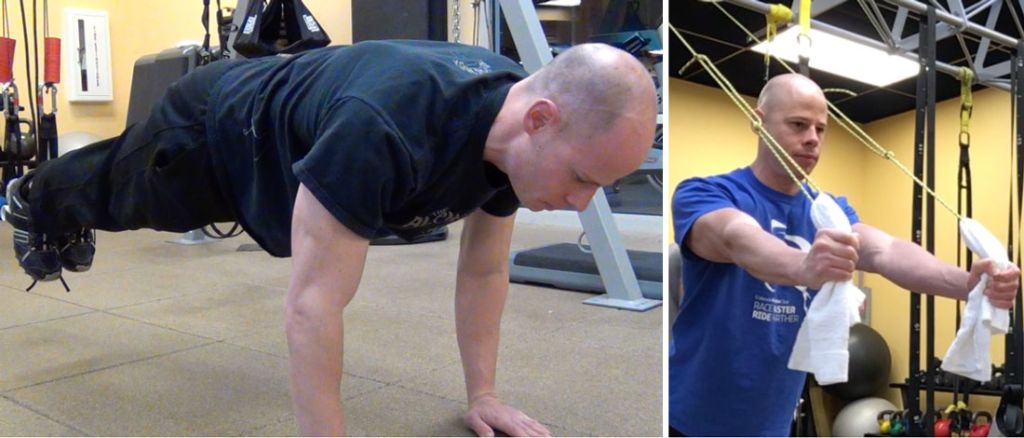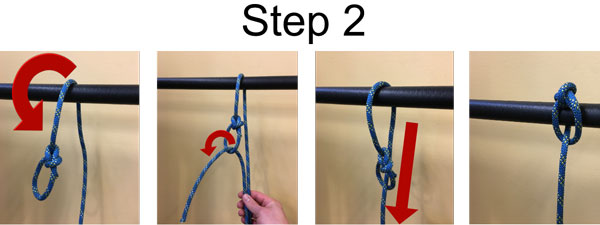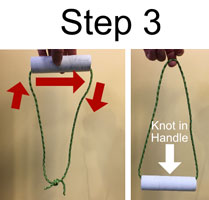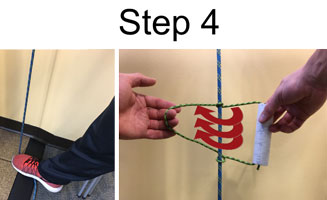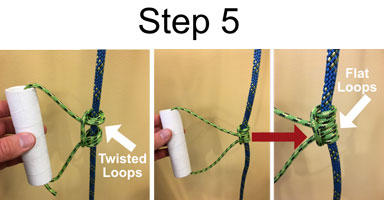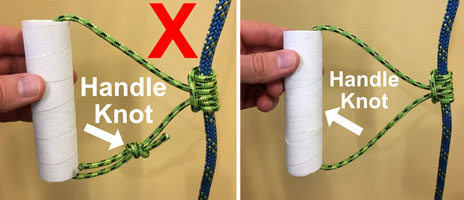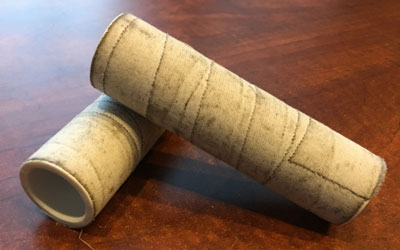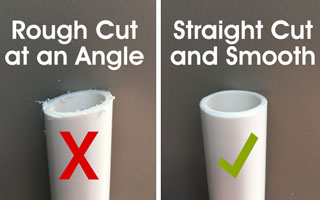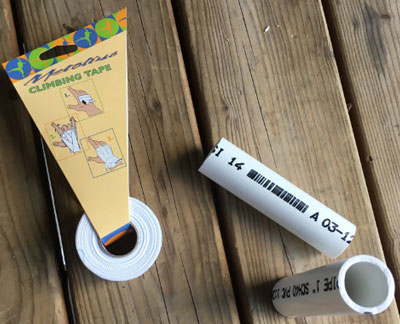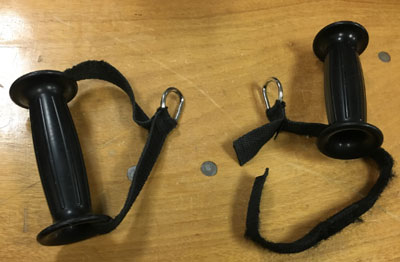
Hello I’m Danny Kavadlo. You know me. I have been one of the world’s most visible proponents of bodyweight training for over a decade. I still am. And while I’ll always express the importance of bodyweight exercise, I’ve personally trained in a hybrid style for over thirty years, lifting weights and moving bodyweight side-by-side.
For this reason, over the years, the one question I’ve received more than any other is: “Danny, how do I combine calisthenics and free weights?”
Search no more. The answer is here.
Not only have I practiced hybrid strength training for decades, I’ve spent the last three years putting this book together so I can answer this question for you as completely as possible. Finally… HYBRID STRENGTH TRAINING—How to Get Jacked & Shredded with Calisthenics & Free Weights has arrived!

There are almost endless variations of every exercise in existence. The exercises included in HYBRID STRENGTH TRAINING are the ones I use because they work, not because they’re trendy. In fact, quite the opposite: because they’re timeless.
All beginners need to start with the basics. Advanced practitioners continue with the basics, and add from there. Fundamental bodyweight exercises are the prerequisite. In other words, if you are unable to perform a bodyweight squat, then there is no sense in putting a barbell on your back.
Calisthenics is the greatest baseline, as well as the oldest and nobles form of strength training. It also gives the highest yield from the least gear. By manipulating the body’s leverage, range of motion and/or muscular emphasis, you can work every muscle in the body equipment free (or equipment lite). Furthermore, having less with which to work compels us to get creative with what we do have.
Employing free weights adds to your baseline, and takes you beyond. Although complete 100% isolation of any muscle is impossible, the nature of training with free weights allows us to target individual muscles and/or muscle groups with greater specificity than other modalities, while still employing our own powers of intramuscular communication. Additionally, free weight exercises are often simpler to scale. (You can adjust the load simply by adding or taking away external resistance, as opposed to calisthenics, which would require altering the exercise itself.) Finally, free weights provide the opportunity to lift a greater absolute load than the weight of an individual’s own body.
Ultimately, we gain the most when we fuse calisthenics and weight training, employing the most effectual exercises from both in order to maximize the value of every workout. Whether you overload your muscles by changing your body’s position (as with calisthenics), adding external resistance (as with weight training) or any combination of the two, you will make gains!
Hybrid Strength Training contains the most detailed programming I’ve ever committed to ink in my career. In addition to the three unique programs (Blue Flame, Red Hot & HELLYEAH!), we discuss training templates, recovery, set and rep schemes, training for max load, weighted calisthenics and much more. I want you to take my programs, exercises and guidance and make them your own, for a lifetime of progressive training.
Check out this video for more info and to get fired up!
Here is what the biggest names in strength have to say:
“I’m honored to call Danny my friend. His impact on my field of strength and conditioning continues to expand daily. This book is part of his legacy. Enjoy.”
—Dan John, Master RKC, author, Never Let Go
“Danny finally did it. I’ve been waiting years for someone to take on the behemoth task of writing a book about combining calisthenics and weight training. What better person to step up to the challenge than Danny f*#kin’ Kavadlo? Hybrid Strength Training is the perfect book for any fitness enthusiast, at any level.”
—Mike Fitch, founder & creator, Animal Flow
“I have been asked countless times over the years to recommend the finest source on combining weight training and bodyweight work… but I have always had to just shrug. Coaches and authors who really understand both disciplines at an elite level are few and far between. But the wait is over. FINALLY that book has been written!”
—Paul Wade, author, Convict Conditioning
I want to know what YOU think of HYBRID STRNGTH TRAINING! Let me know in the comments below. KEEP THE DREAM ALIVE!
-DK
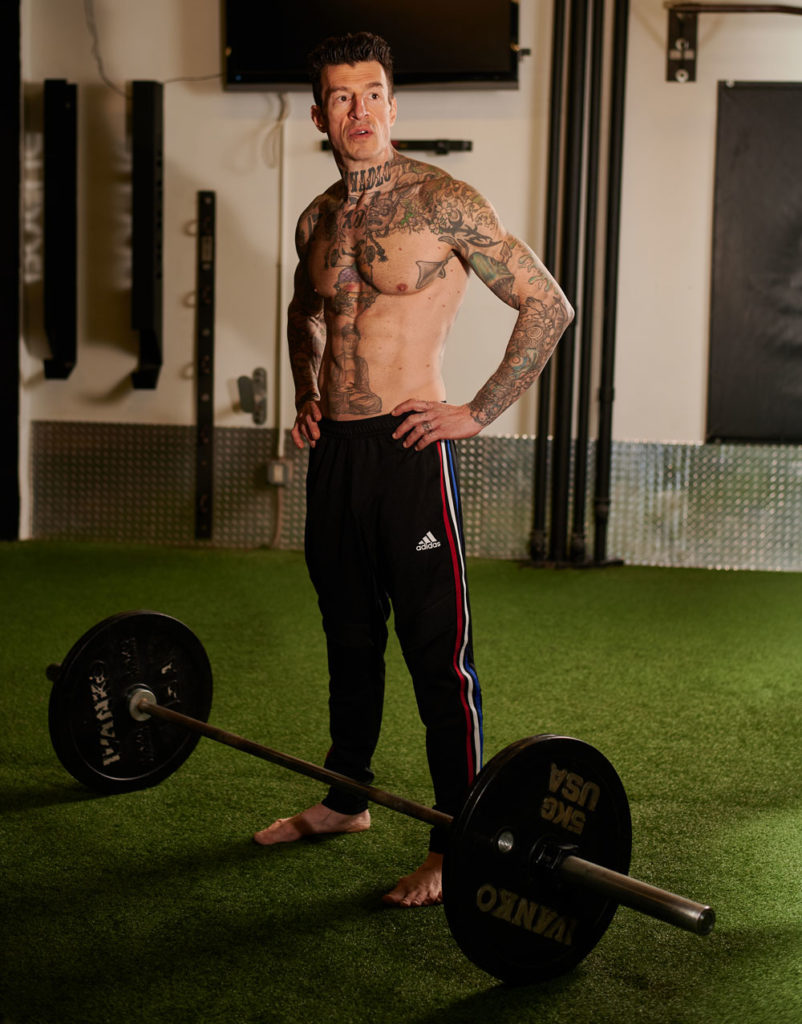
***
Danny Kavadlo helped pioneer the bodyweight fitness craze with Strength Rules, Diamond-Cut Abs and Get Strong, all of which went to #1 on Amazon. He has been featured in the New York Times, Huffington Post and Men’s Health, and is a contributor to TRAIN magazine and Bodybuilding.com. When he’s not traveling the world as Master Instructor for Dragon Door’s acclaimed PCC Certification, Danny works with personal training clients in New York City and virtual clients everywhere. Danny Kavadlo’s long awaited HYBRID STRENGTH TRAINING is available from Dragon Door Publications.
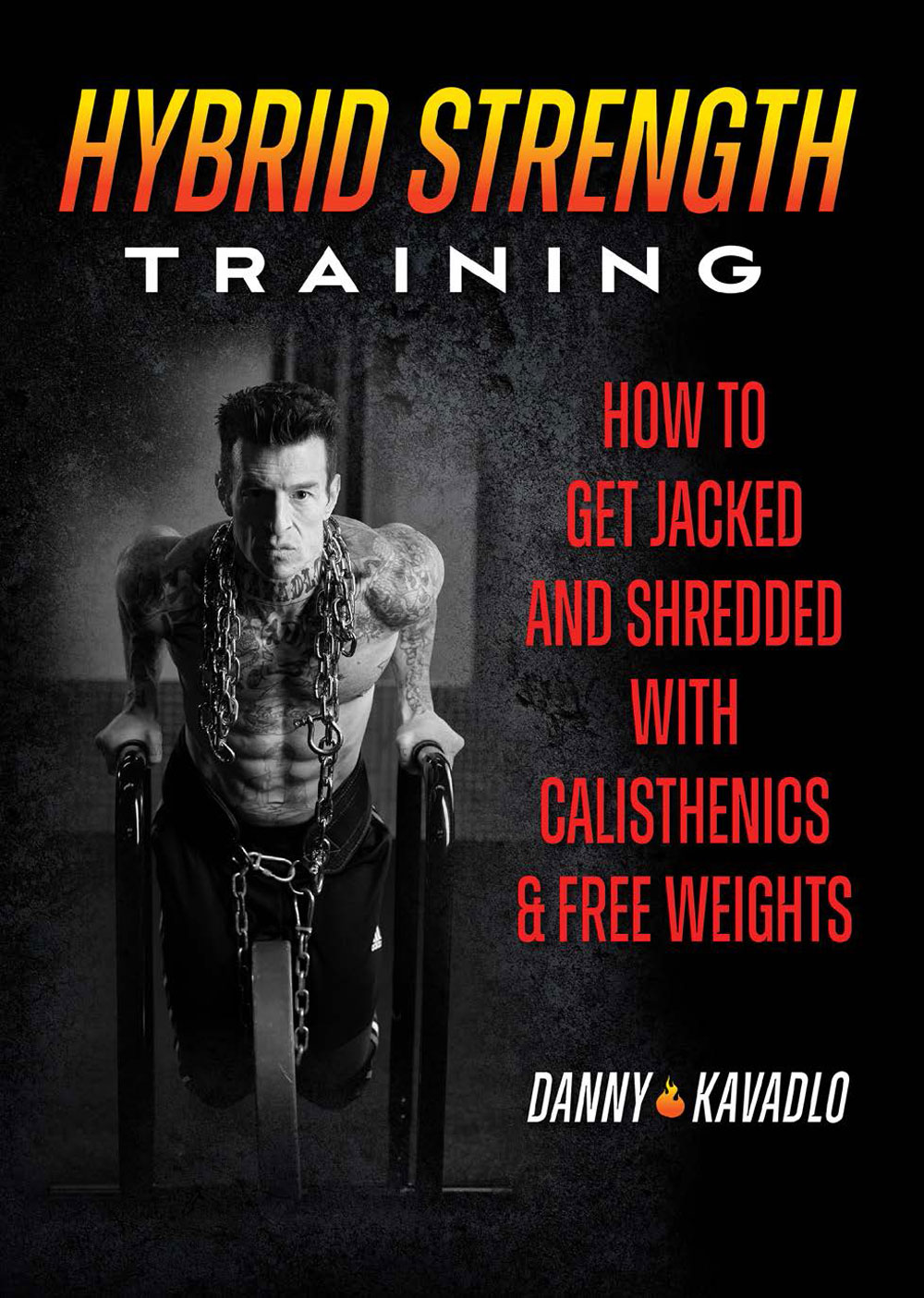
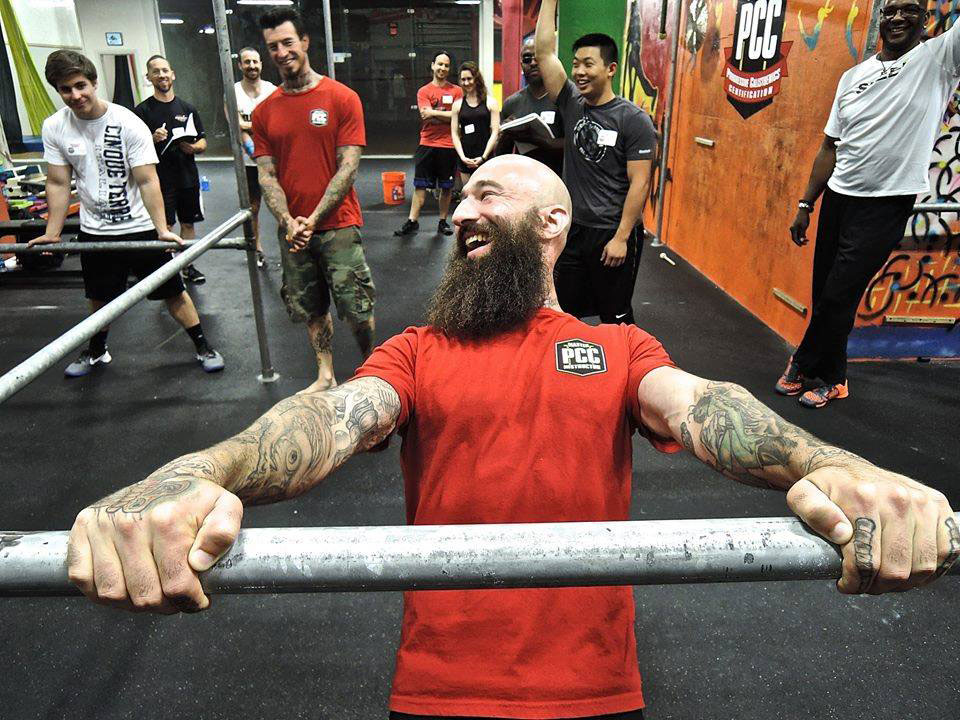
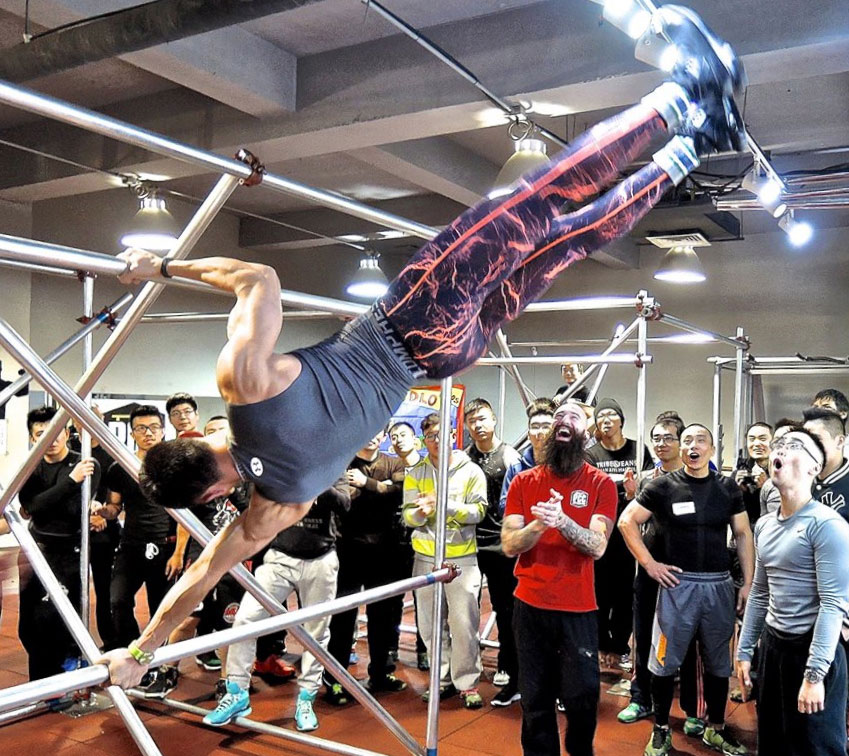
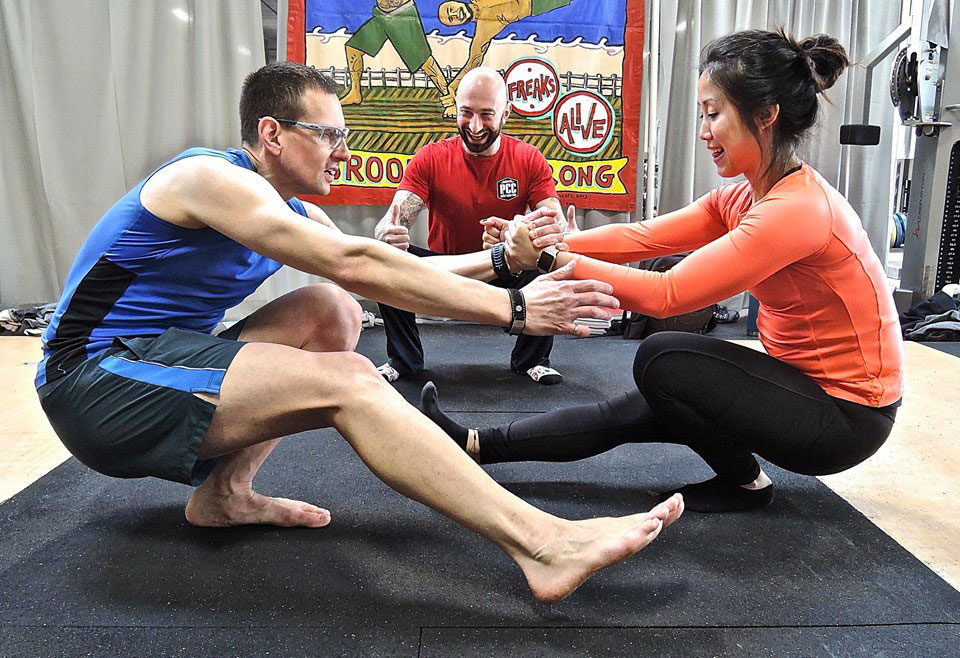
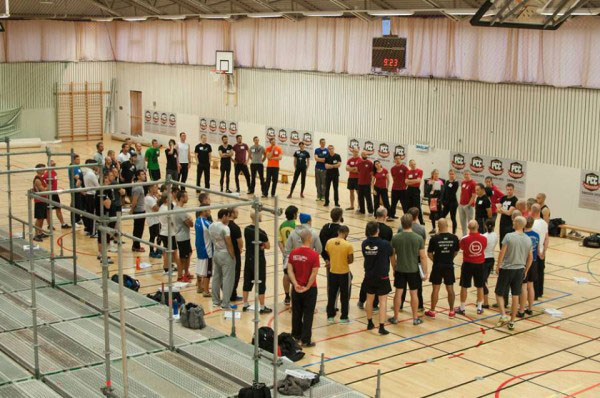
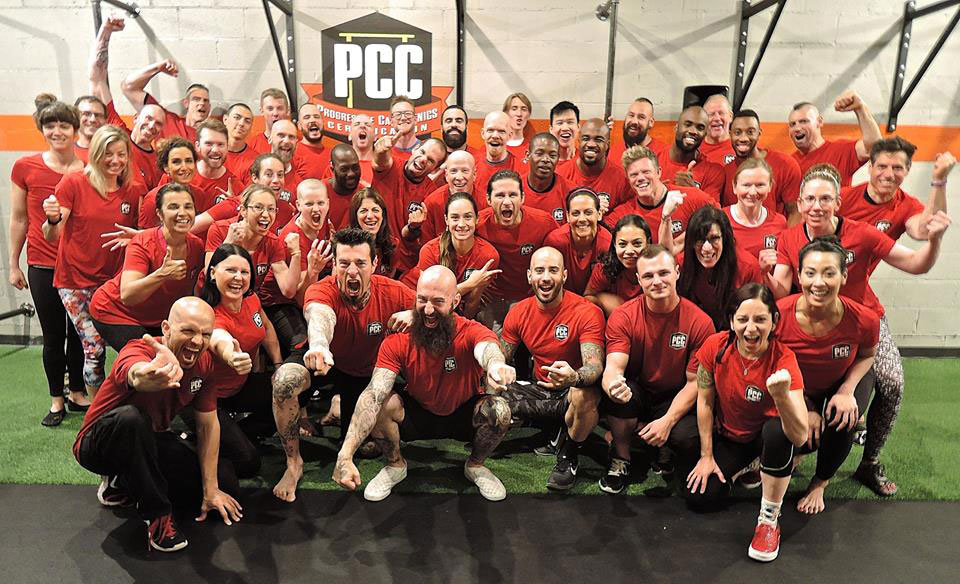
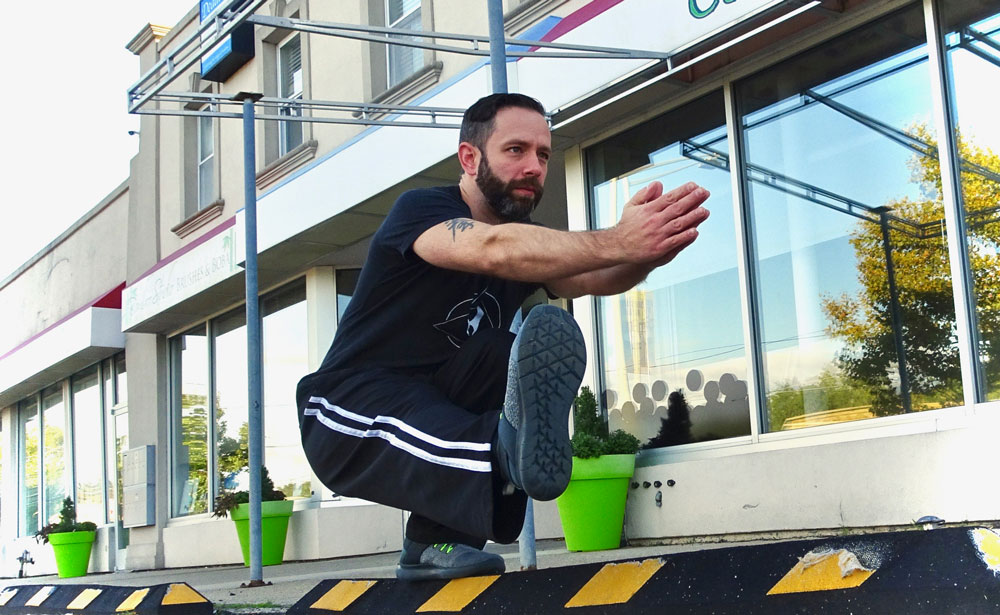
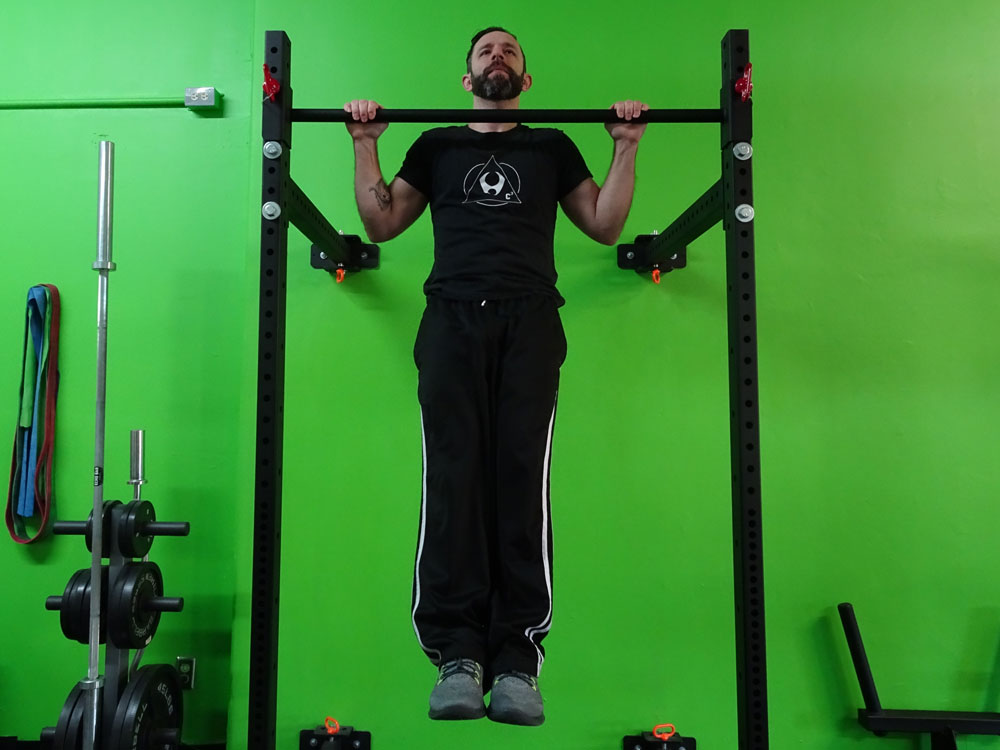
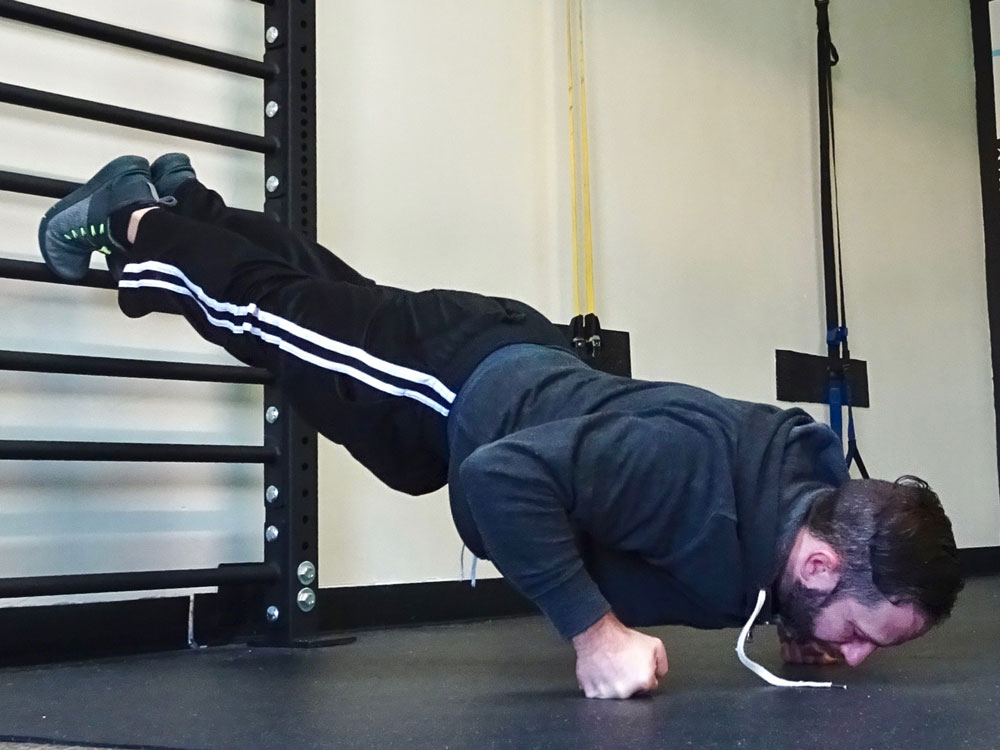
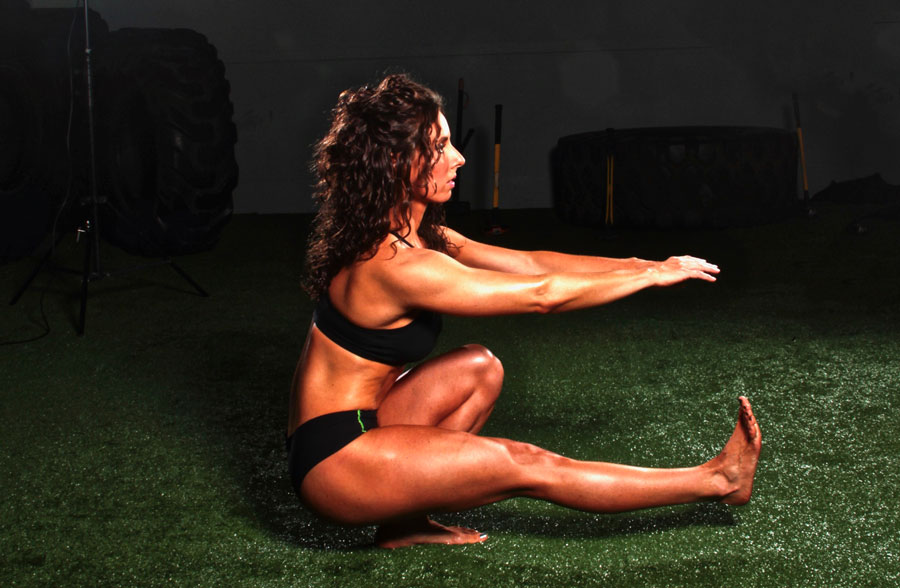
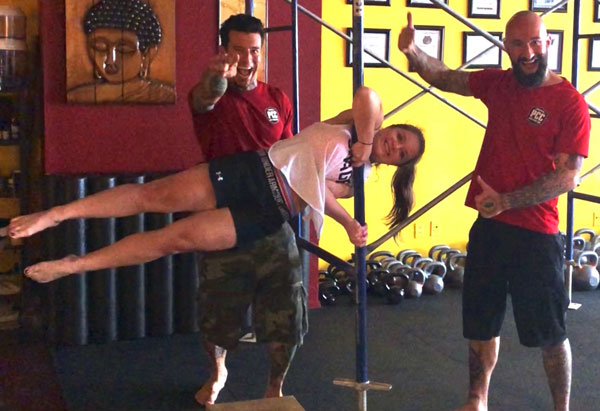
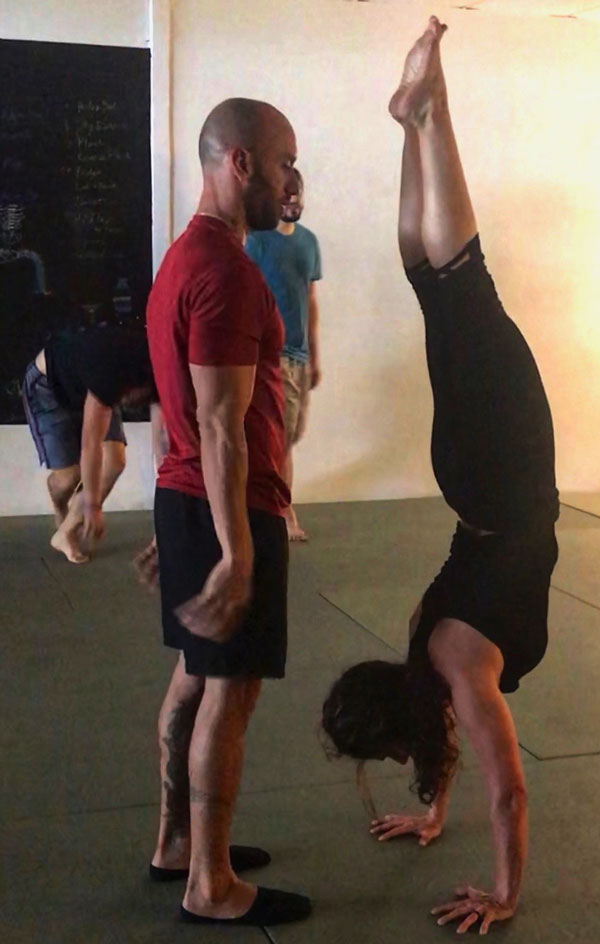 – Amazingly, we both worked on “skinning the cat”, bar levers, floor holds and more! I might not be able to do a full bar muscle-up yet, but with the guidance of The
– Amazingly, we both worked on “skinning the cat”, bar levers, floor holds and more! I might not be able to do a full bar muscle-up yet, but with the guidance of The 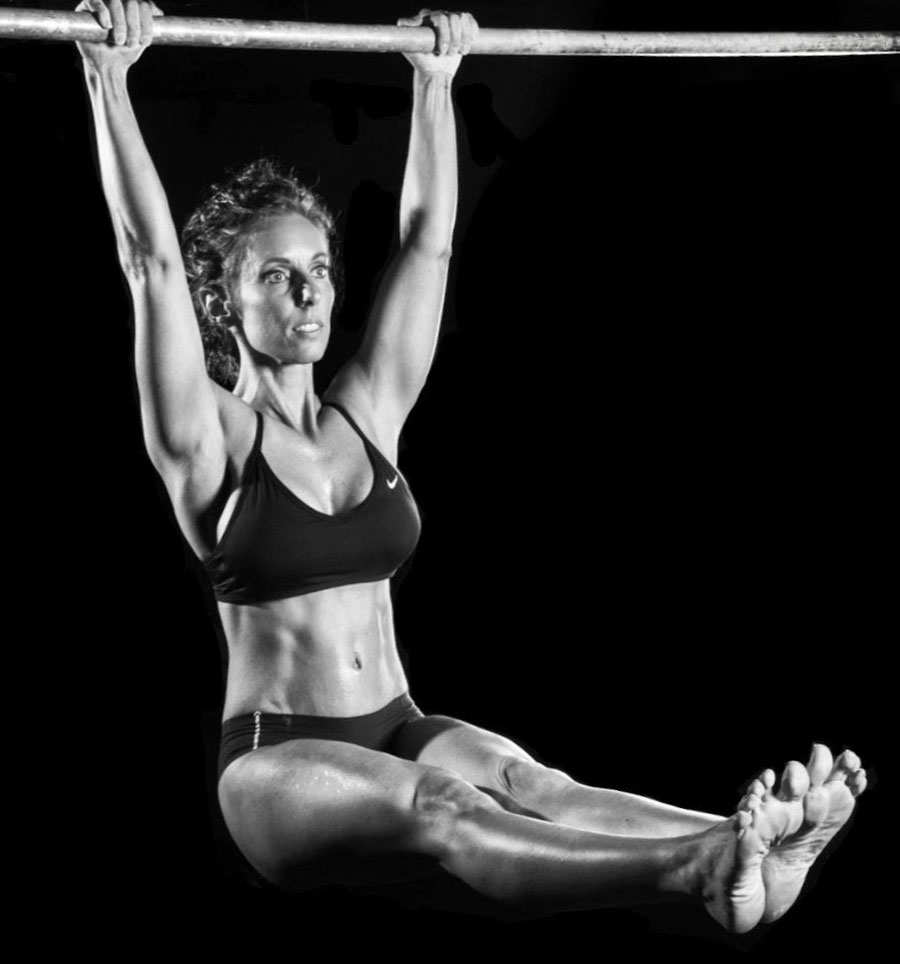
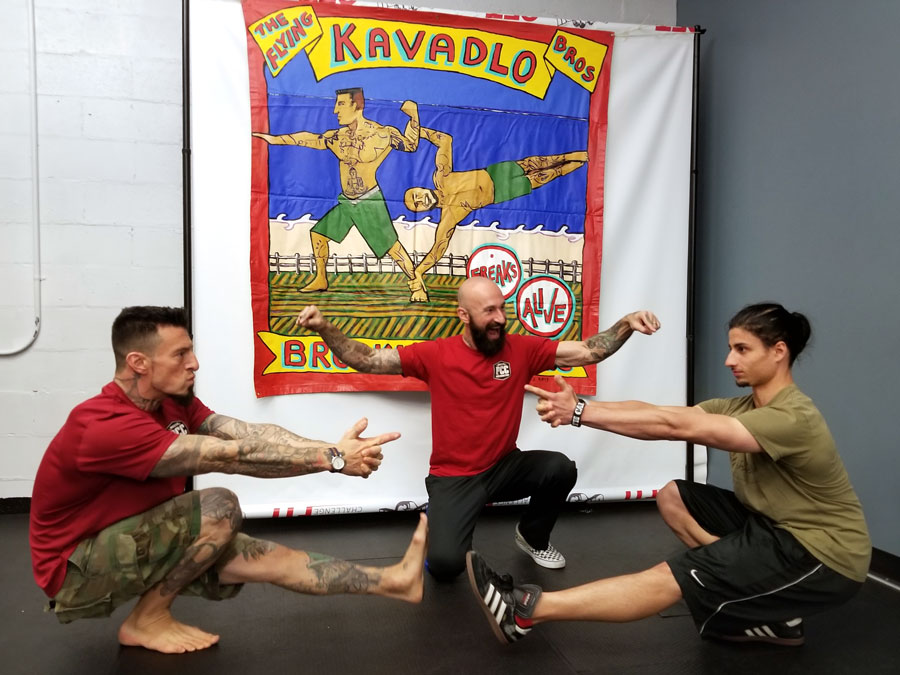
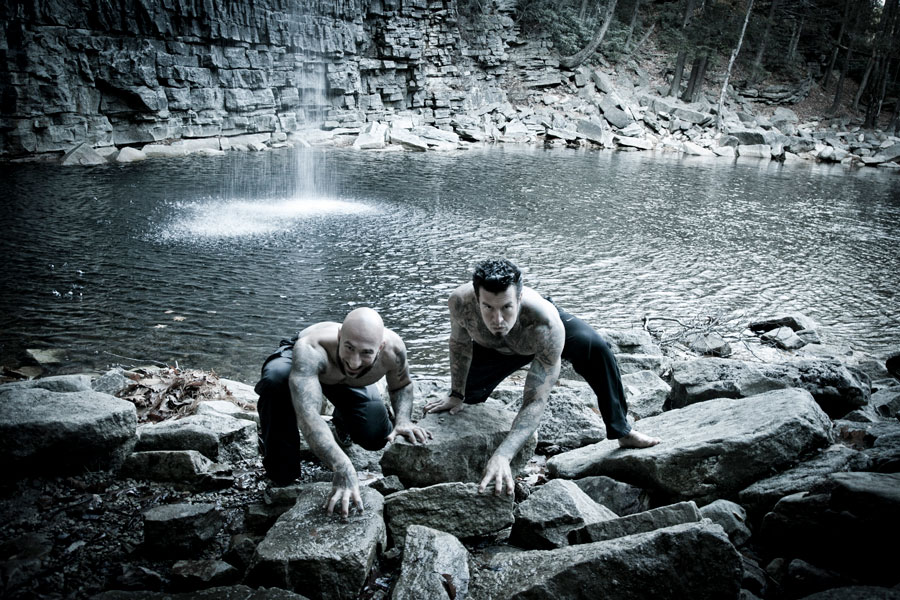 In my opinion, a true student of calisthenics needs to have exposure to all pillars of the system. In addition to putting in the sets and reps, it’s helpful for overall strength and wellness to develop real world skills and coordination from activities such as hiking, swimming, throwing and sprinting. Working in scenarios where all the muscles are employed together while navigate toward a goal is the epitome of the calisthenics movement.
In my opinion, a true student of calisthenics needs to have exposure to all pillars of the system. In addition to putting in the sets and reps, it’s helpful for overall strength and wellness to develop real world skills and coordination from activities such as hiking, swimming, throwing and sprinting. Working in scenarios where all the muscles are employed together while navigate toward a goal is the epitome of the calisthenics movement.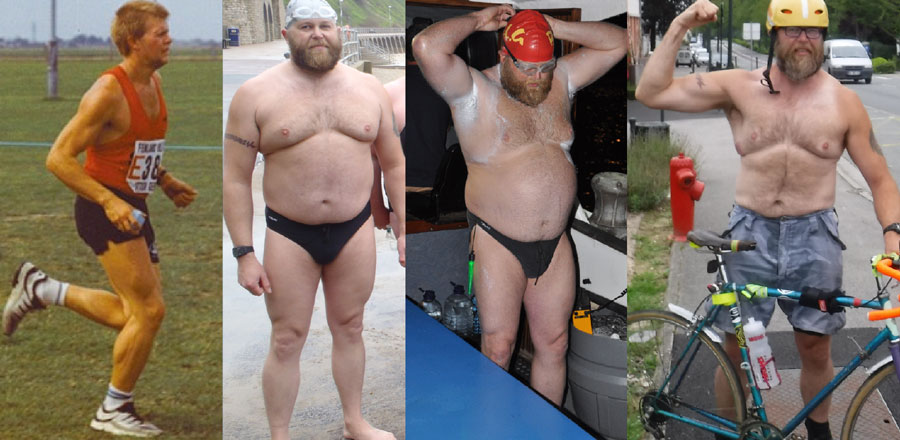
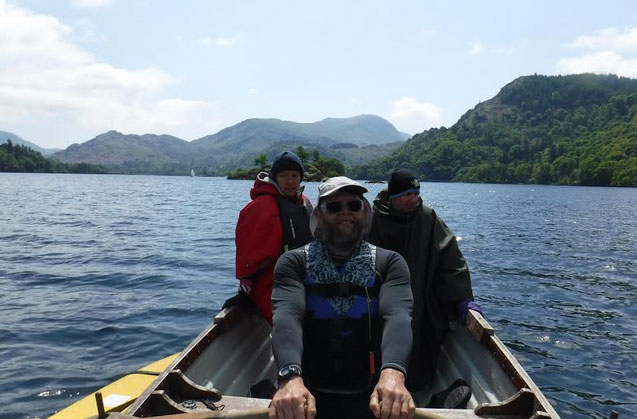
 At the Louvre in Paris the other week, I photographed a bearded statue with a big arm. “That’s me,” I declared to myself, that perfection visible to me beneath an imperfect form. “It’s what you are becoming,” said a voice from the future. I didn’t realize until relatively recently (the last decade or so) that I am a time traveler. I’ve often imagined my future self returning to give advice. Sometimes the advice felt unhelpful, but I took comfort that the future me cared enough to try and help. Sometimes sneering at the elder know-it-all version of myself, I resolved to do it my way. “Stick to the basics,” he said, but I clamored for the cheer of the crowd, the wow of friends and colleagues. Vanity lifting and trophy hunting were (and are) very seductive.
At the Louvre in Paris the other week, I photographed a bearded statue with a big arm. “That’s me,” I declared to myself, that perfection visible to me beneath an imperfect form. “It’s what you are becoming,” said a voice from the future. I didn’t realize until relatively recently (the last decade or so) that I am a time traveler. I’ve often imagined my future self returning to give advice. Sometimes the advice felt unhelpful, but I took comfort that the future me cared enough to try and help. Sometimes sneering at the elder know-it-all version of myself, I resolved to do it my way. “Stick to the basics,” he said, but I clamored for the cheer of the crowd, the wow of friends and colleagues. Vanity lifting and trophy hunting were (and are) very seductive.